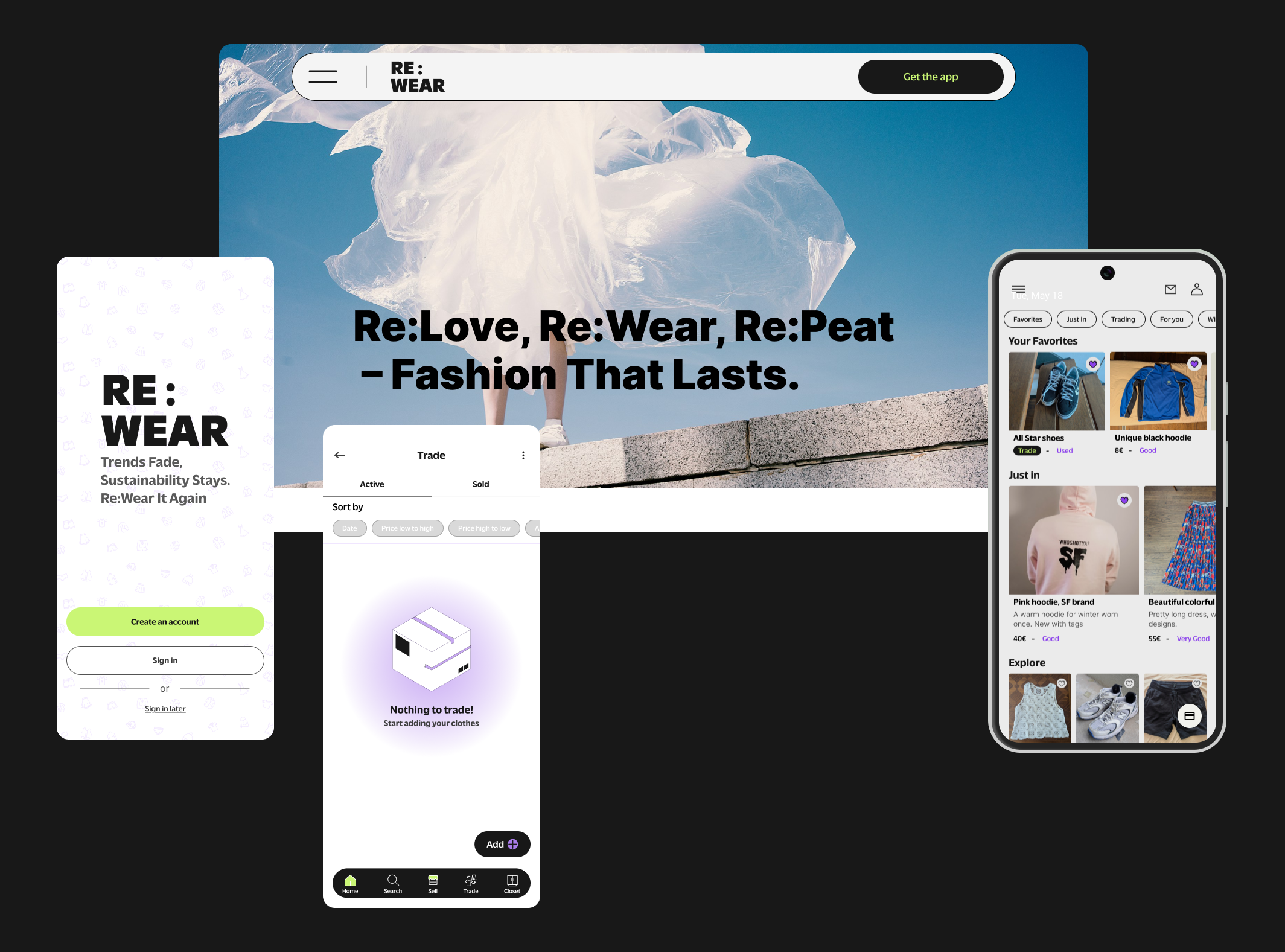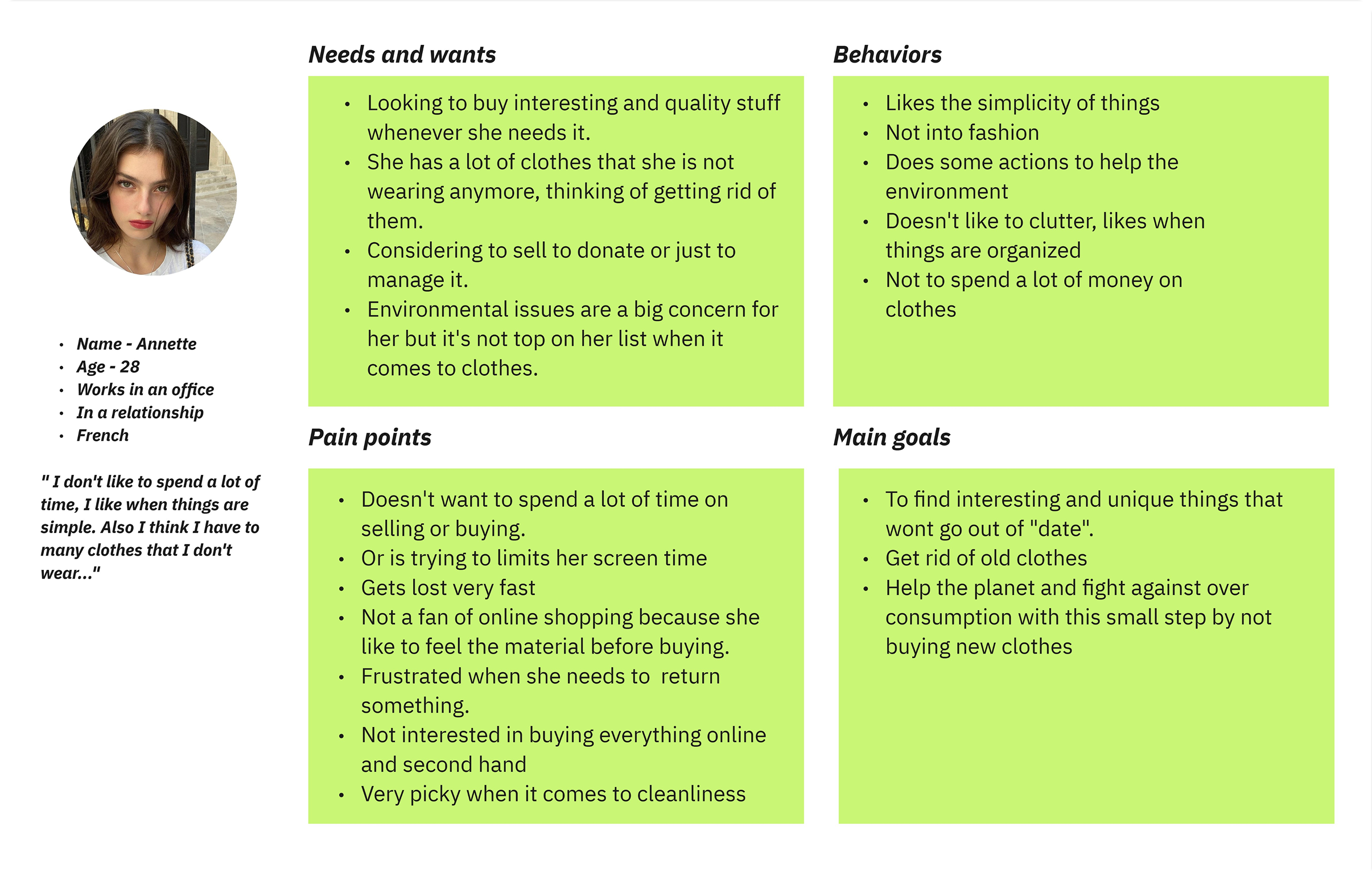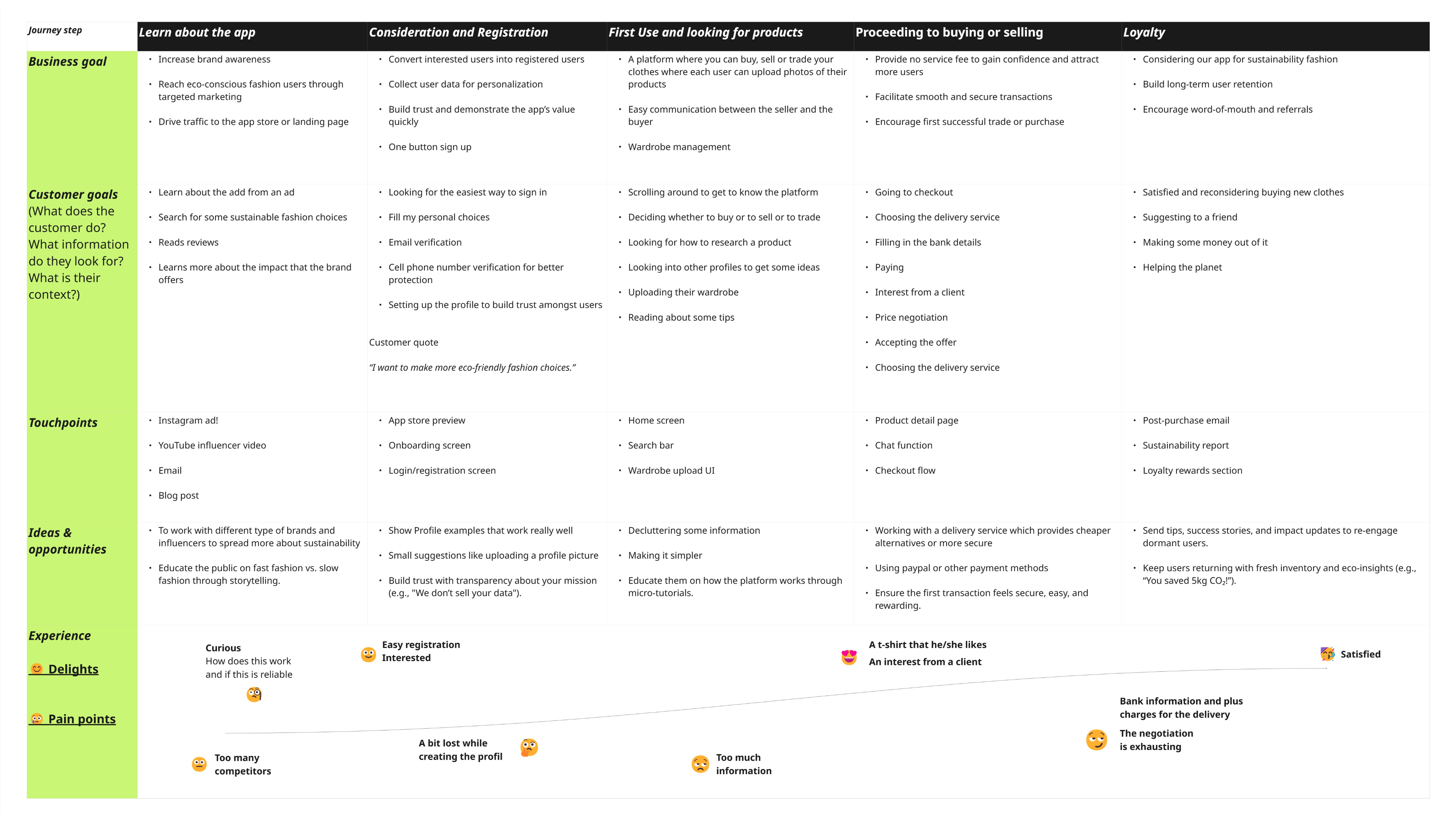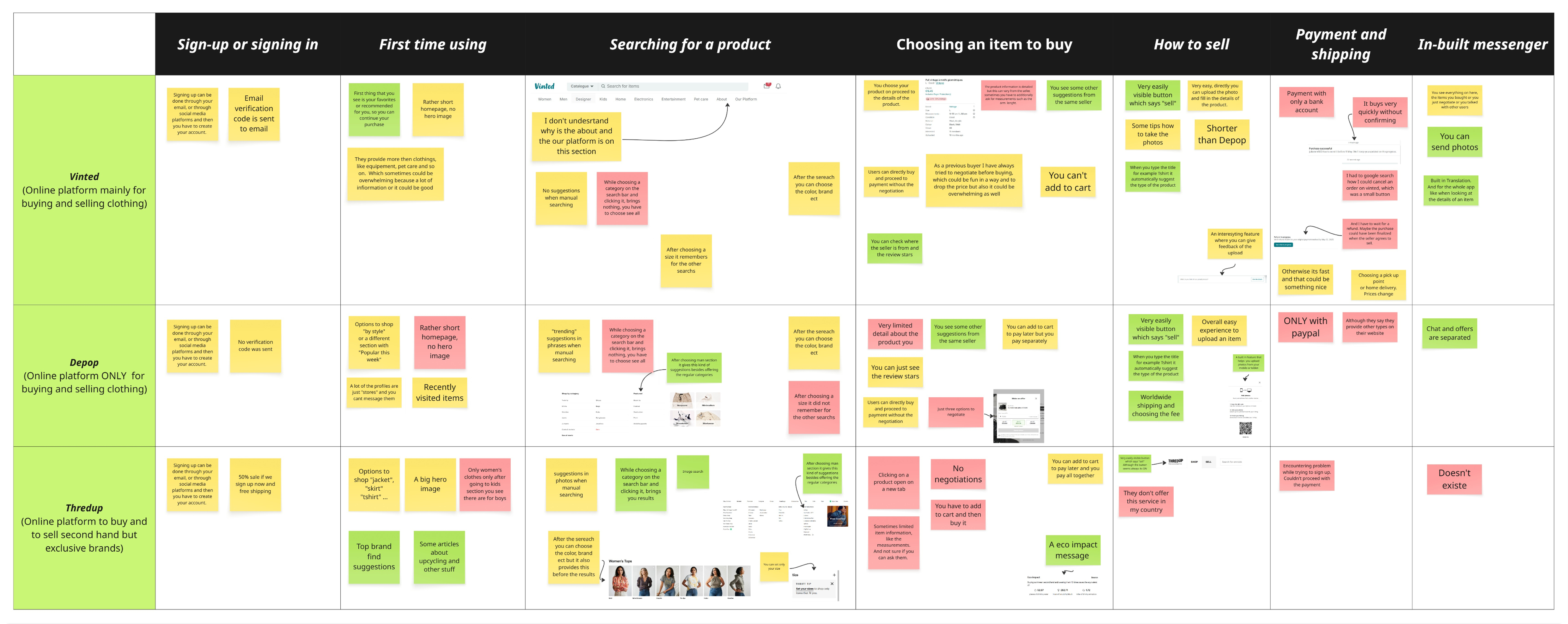In a time when overconsumption and environmental challenges are at the forefront, we saw an opportunity to make a difference. There’s already enough clothing in circulation the goal is to extend the life of garments by making it easy to rewear, repurpose, and redistribute fashion.
Our primary objective is to reduce the carbon footprint of the fashion industry while offering affordable and accessible clothing options to everyone.
3 months
I was responsible for conducting user research, creating user flows and wireframes, and designing the overall UI/UX of the app.

People who care about sustainability, enjoy vintage fashion,
and often have a limited budget struggle to find affordable, unique clothing.
Many individuals who want to declutter their
wardrobes don’t have the time, tools, or motivation to sell or trade their pre-loved clothes.
Additionally, for people whose style changes frequently, their closets quickly fill with items they no longer wear creating a need for an easy and efficient way to resell or exchange clothing.
To better understand user needs, I conducted interviews with a diverse group of people interested in sustainability and second-hand fashion. These conversations helped me uncover not only key user motivations and pain points, but also direct and indirect competitors in the market.
The interviews played a crucial role in shaping realistic and focused user personas, by revealing people’s attitudes toward sustainable fashion, their shopping habits, and the barriers they face when trying to sell or trade clothing.


To better understand the user's experience and pain points, I created a detailed journey map based on a typical user scenario: someone wanting to declutter their wardrobe and use Re:Wear to trade or sell clothes.
The map outlines each step of the user’s interaction—from discovering the app to completing a transaction. It helped highlight emotional highs and lows, friction points, and opportunities to improve the flow. For example, I noticed that users often feel overwhelmed when negotiating, so I simplified proposed the trading option or already built new price proposels.
To better understand my users and define key design opportunities, I created a "How Might We" (HMW) map based on user needs, frustrations, and behaviors. I identified three main user types:
- People who care about sustainability and enjoy vintage fashion but often have limited budgets
- People who want to sell their old clothes but feel overwhelmed by clutter and don’t have the time to list items
- People who frequently change their style and want to quickly clear out their closets

One of the most important steps in the UX process is benchmarking. I conducted a thorough analysis of competitor apps to evaluate their features, user flows, and overall experience. My top three references were Vinted, Depop, and ThredUp. This research helped me identify essential features to include, as well as opportunities for improvement. For example, Re:Wear introduces a unique Trade feature that doesn't exist on any of these platforms, setting it apart from the competition.


Through the interviews, I discovered that while some features weren’t considered useful, others — like the trading option — sparked significant interest among users. This insight influenced which features were prioritized in the final design.
One of the most important steps in the UX process is benchmarking. I conducted a thorough analysis of competitor apps to evaluate their features, user flows, and overall experience. My top three references were Vinted, Depop, and ThredUp. This research helped me identify essential features to include, as well as opportunities for improvement. For example, Re:Wear introduces a unique Trade feature that doesn't exist on any of these platforms, setting it apart from the competition.

